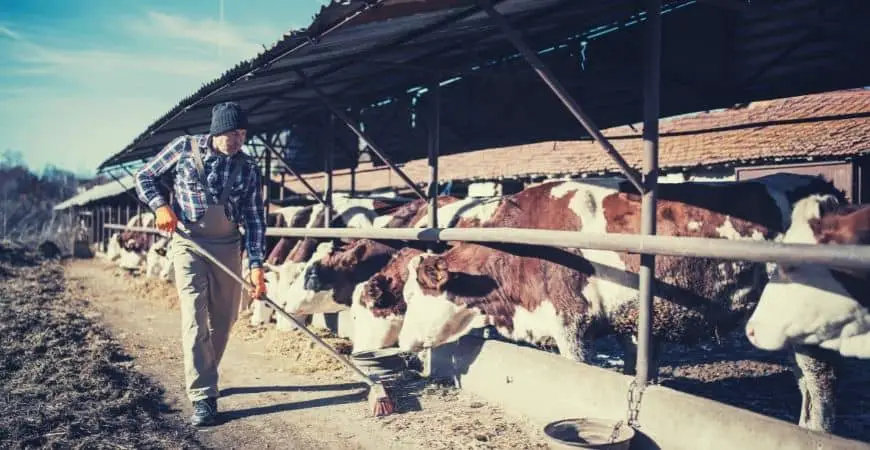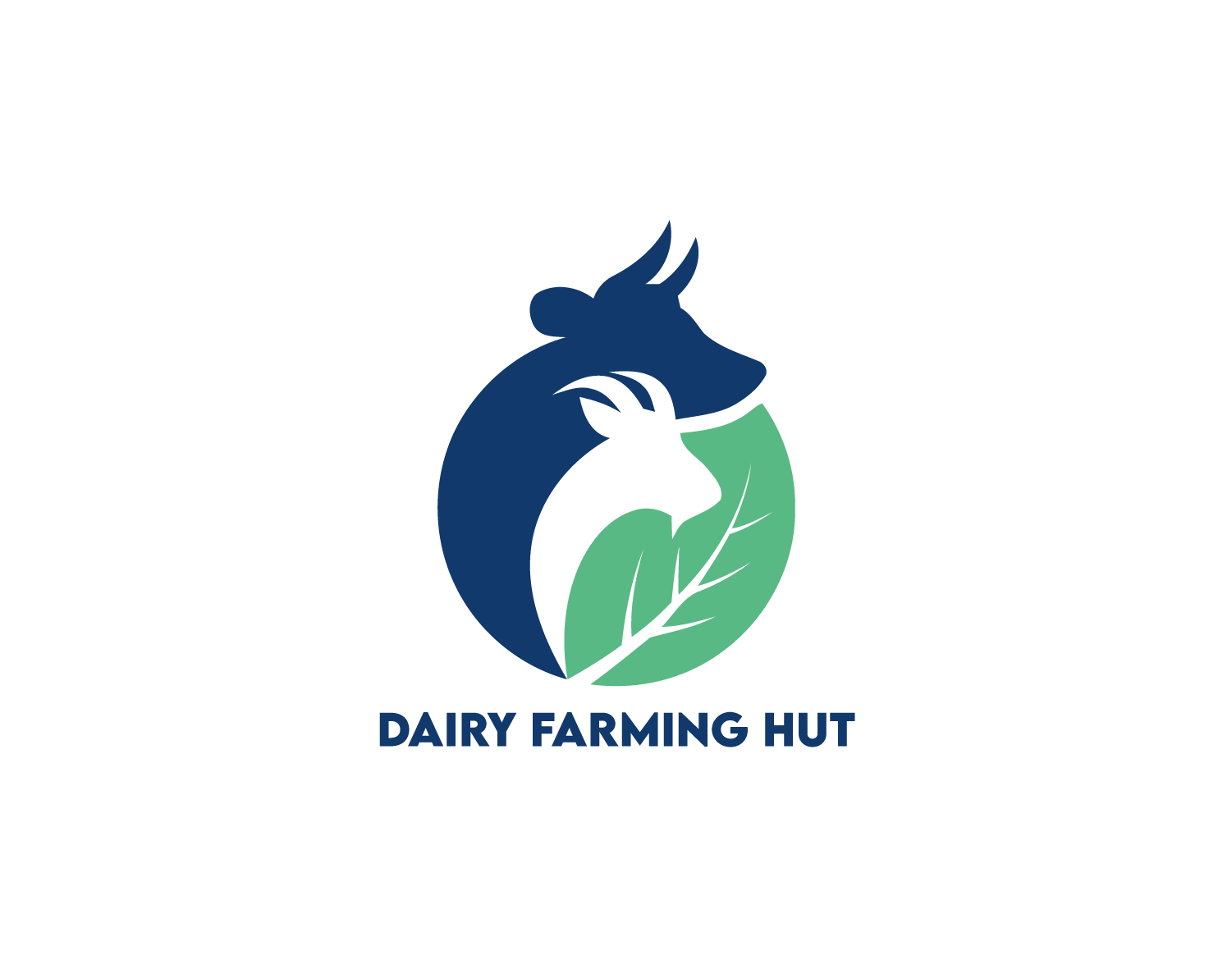Ever wondered why Dairy farming remains labor-intensive despite all the advancements in technology? Dairy farming has been going on for centuries, and the process is quite simple- cows need to be fed, milked, and watched for anything that can go wrong.
Dairy farming remains labor-intensive because most dairy farmers cannot afford to invest in technology and eventually hire workers to stay competitive in the business. Even by using certain tools and machines, dairy workers are needed at various times - during milking, feeding, and cleaning.
Let's look further in detail why dairy farming remains a laborious process despite all the technological innovations.
Dairy Farming Remains Laborious

Amazingly, the average amount of labor per unit of production for dairy farms is twelve times more than that of vegetable farms and three times more than that of grain farms.
Here are some other labor-intensive aspects of dairy farming:
Cows need to be fed, milked, and cared for constantly. Dairy farmers can use milking machines to improve the process of milking. However, they still need to keep an eye on the cows to ensure that they are healthy enough for a milking session.
On average, hand milking a cow takes around 10 to 30 minutes, but with the help of a machine, it takes only 2 to 4 minutes. However, milking machines are still not common on farms despite this labor-saving benefit because of their high costs.
Watch this video to get an idea of how hard it can be to milk cows by hand.
After milking is done, workers are required to clean the Cow teats to ensure that the next batch of milk is not contaminated. Cow milking machines are also need to be cleaned and inspected for any problems before and after a milking session.
After the milking process is completed, the milking area needs to be cleaned and disinfected. Again, tools are available to assist in these tasks, but it is still a labor-intensive process that requires someone to clean the area using cleaning tools.
Similarly, milk is handled manually at most dairy farms. For example, bringing milk for storage and then placing it in cooling tanks are done manually. Hence, it requires staff to carry out these duties.
So, with access to the tools and machinery on a dairy farm, some tasks are simplified but still need dairy workers and farmhands to perform them.
There is a common misconception about the dairy farm that milking cow is the only laborious task.
However, this is not the case.
The operation of a dairy farm is more than just milking cows. There is a lot of work that goes into caring for the animals and providing them with safety and comfort for better milk production. Although the dairy industry has changed over the years, the primary task of caring for cows has remained the same.
How many workers are needed on a Dairy Farm?
The answer to this question depends on the size of your dairy farm and how many cows you have. The average dairy farm with 100 cows needs 12 laborers to help take care of the animals and milk them.
Is Dairy Farming Hard Work?
Dairy farmers usually start their day early in the morning because they have to feed the cows and ensure that they are healthy enough for the milking process.
On a typical day, the farmer will milk cows, feed cows, clean up after the cows are milked. The dairy farmworker will also make sure that any equipment which is used gets cleaned and is in working order.
Dairy farmer also feed calves with milk or formula: this has to be fed every few hours, so there is lots of work involved in this job.
The morning routine also includes preparing and providing feed, cleaning stalls, milk storing and cooling, cleaning bulk tanks, and cleaning other tools and equipment for milk handling.
The above tasks have to be performed again in the afternoon, after milking.
If the dairy farm has pasture, the farmer needs to check on the grazing area. Dairy farmers also need to fix any broken fences and perform all the other checks that can help to maintain the pasture.
In winters, dairy farmers need to ensure that barns and shelters maintain the proper temperature for dairy cows. Similarly, in summers, they need to make sure that adequate ventilation is provided for the dairy cows, and misting or fogging systems are working to maintain a comfortable temperature in the cowshed.
Farmworkers also need to manage manure produced by cows because manure has to be disposed of safely.
Apart from routine chores, a dairy farmer may also have to check on pregnant cows and other sick animals and treat them or arrange a vet for their treatment.
So, dairy farming is a challenging and laborious job that ensures dairy products are available for consumers and the milk is safe to drink.
Check out this outstanding video showing daily chores in dairy farmer's life.
Replacing Human Workers with Machines
As mentioned above, dairy farming requires a lot of physical effort to complete the daily tasks of making milk. However, with technological advancement, these tasks can be automated and may help to minimize human involvement.
There is no doubt that the introduction of technology can benefit the farm operations and provide the following benefits:
With the help of technology, the dairy farm can work a lot better from the beginning. For instance, to find out which cow produces more milk or is not producing milk, robots can produce statistics comparing the data related to milk production with other cows. Therefore, these robots can effortlessly provide more helpful information for farmers about their cows.
Why Dairy farms are reluctant to implement Automation?
The main reason for dairy farms not opting for automation is the cost of the machinery that would replace human workers. Most dairy farms cannot afford the price of a $300,000 robotic arm or a self-driving tractor.
Also, the dairy farm usually hires non-skilled workers or farmhands who are familiar with routine manual jobs but cannot operate and manage complex machinery like the robotic arm.
Another cause for resisting is that Implementing automation and robots on a dairy farm requires a lot of capital initially. Additional skilled staff is also needed for operating and managing the machinery. This adds up to the cost and may not be feasible for small farms.
Ways to make dairy farming less labor-intensive
The dairy industry is an excellent source of economic development, but it also has high labor requirements and the usage of milk cows. Therefore, dairy farming is not very economically efficient because it does require a lot of manual labor.
To be less labor-intensive, it is vital to use various types of tools and equipment on the dairy farm to help eliminate some of the time-consuming tasks that require a lot of human labor.
Check out this video of Lely Robot clearing manure from barn floor.
Dairy farmers are encouraged to rethink their manual production methods on a dairy farm in order to make the process more efficient. For improved production, it is crucial to have the latest technology in place that can automate some of the process and other functions on a dairy farm.
While traditional dairy farming has been labor-intensive, some farmers have begun to adopt new methods to improve production. These methods include the use of Goats and Sheep in milking breeds.
The introduction of these animals can help reduce the level of labor required on the farm, and freeing up time for other resources. At the same time, they reduce the amount of feed needed for each animal which can lead to better financial returns as well, especially when selling milk direct to consumers or local cheese manufacturers.
This can reduce labor-intensive tasks within the farm, leading to reduced labor costs and improved profitability for farmers.
To Sum Up
Dairy farming remains among the most labor-intensive businesses globally. Milk production must be carefully managed from beginning to end, with animals being milked two or three times per day. This process takes more time to complete than the processing of many other types of food.
Dairy farmers have been adding more technology in recent years to reduce their dependence on human workers. However, it's still difficult for many small family farms to operate without hiring additional employees or seeking outside help from others to keep up with their business needs.
